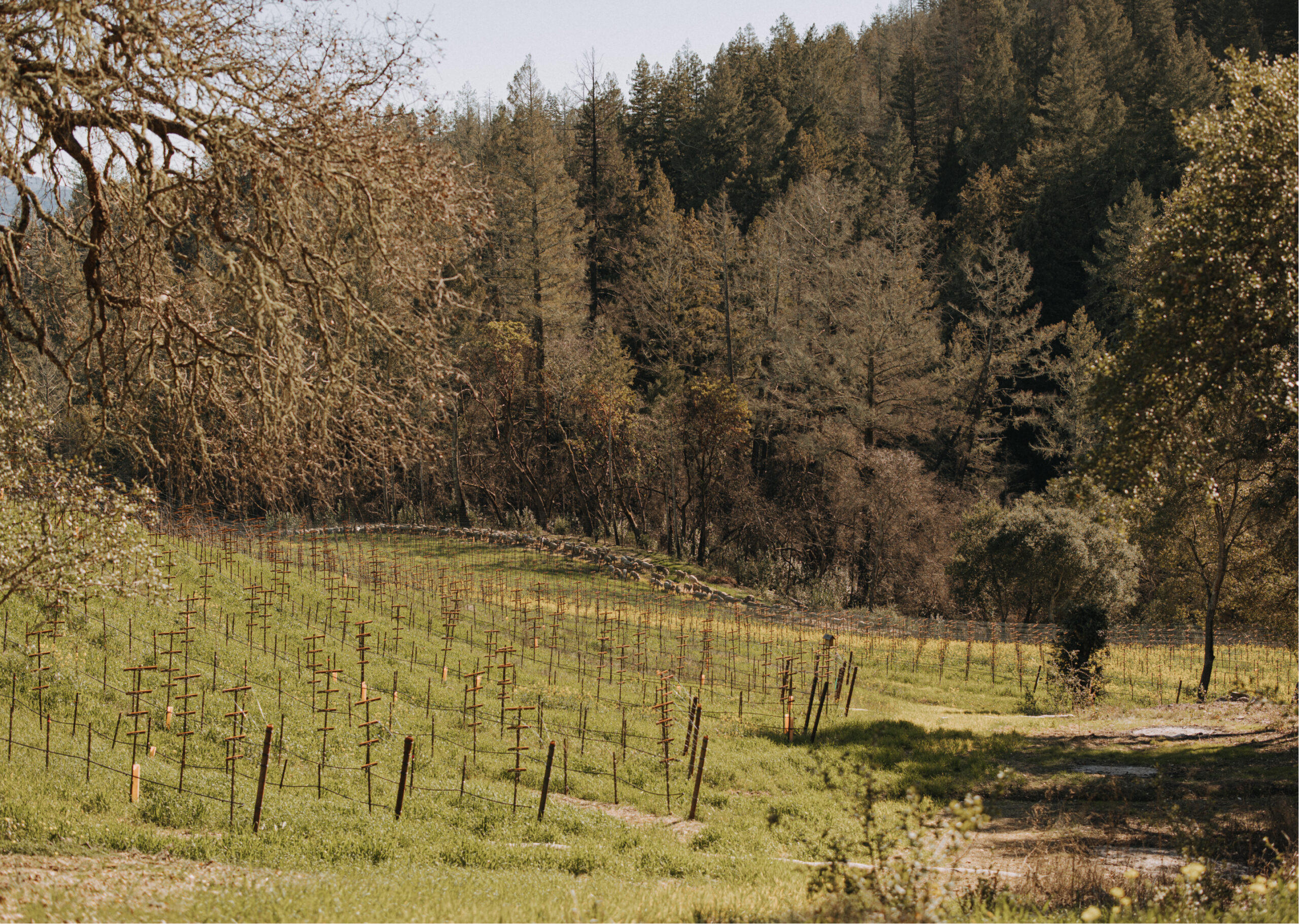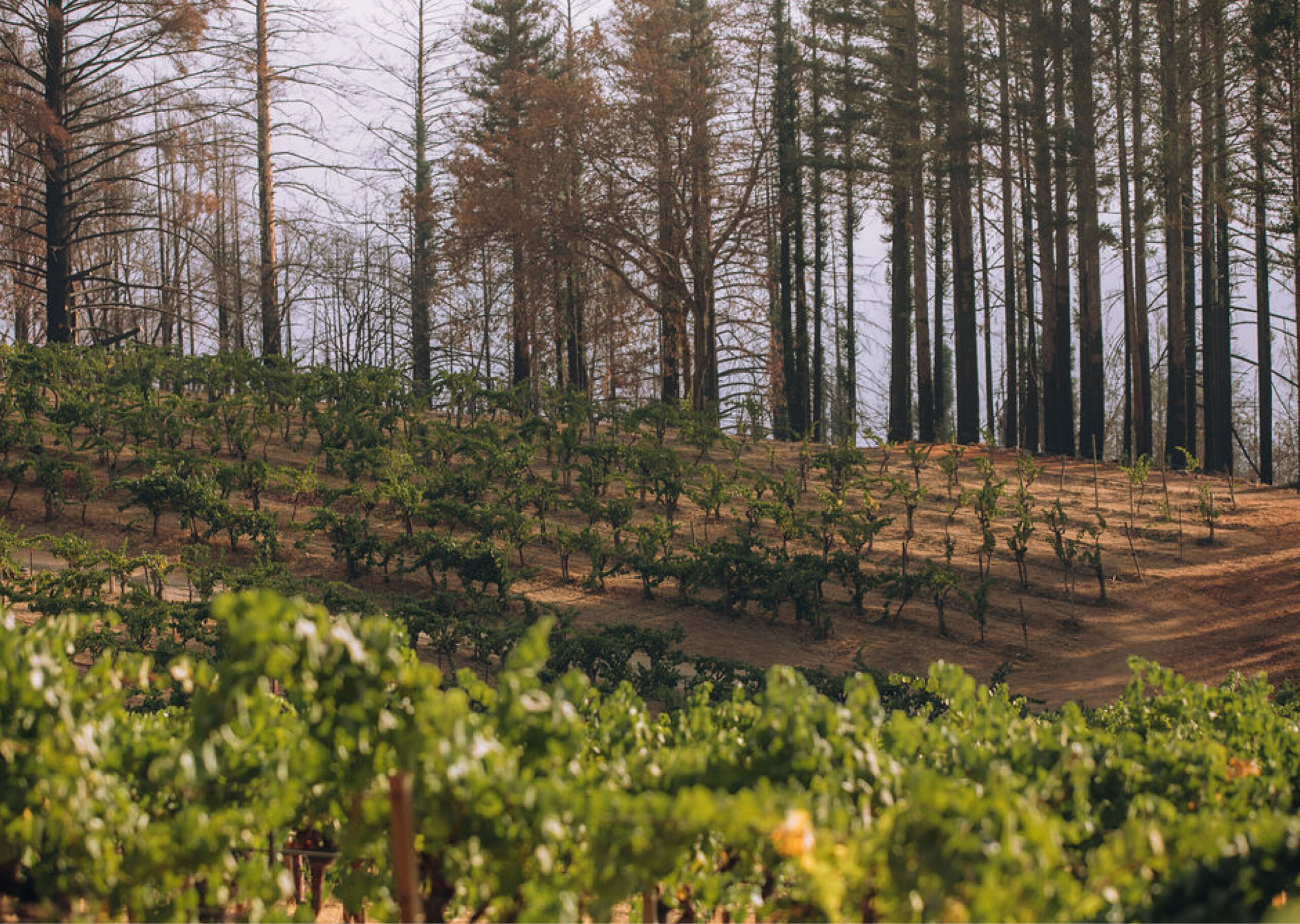Protecting and nurturing
these vineyards for generations
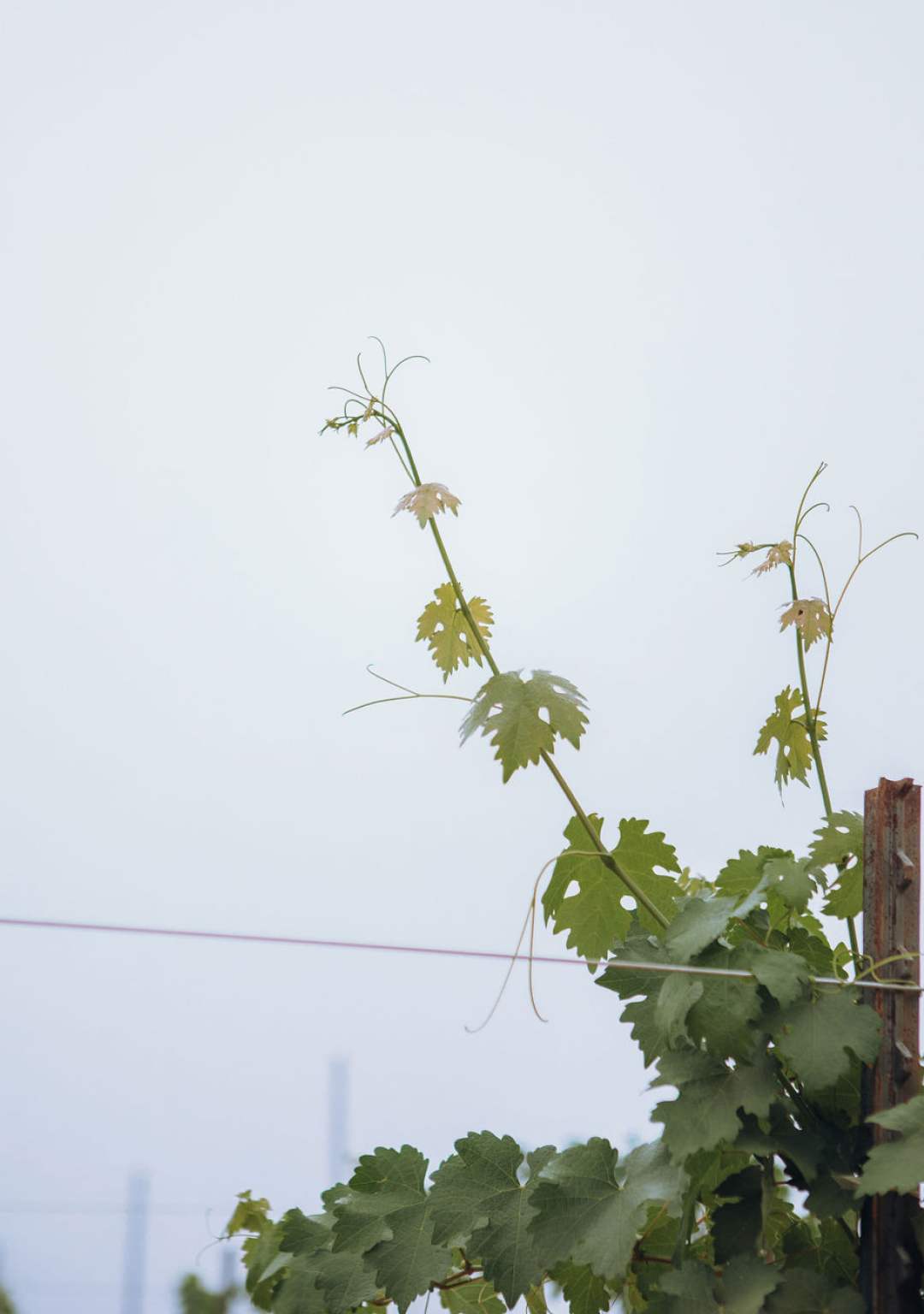
Stony Hill Vineyards
Our vineyard sits on steep terraces on the eastern side of the Mayacamas Mountains in the Spring Mountain District, between St. Helena and Calistoga.
We celebrate and cherish the historic parcels of this estate while establishing new beginnings. You will find our wines show continued expression and added possibilities of this site.
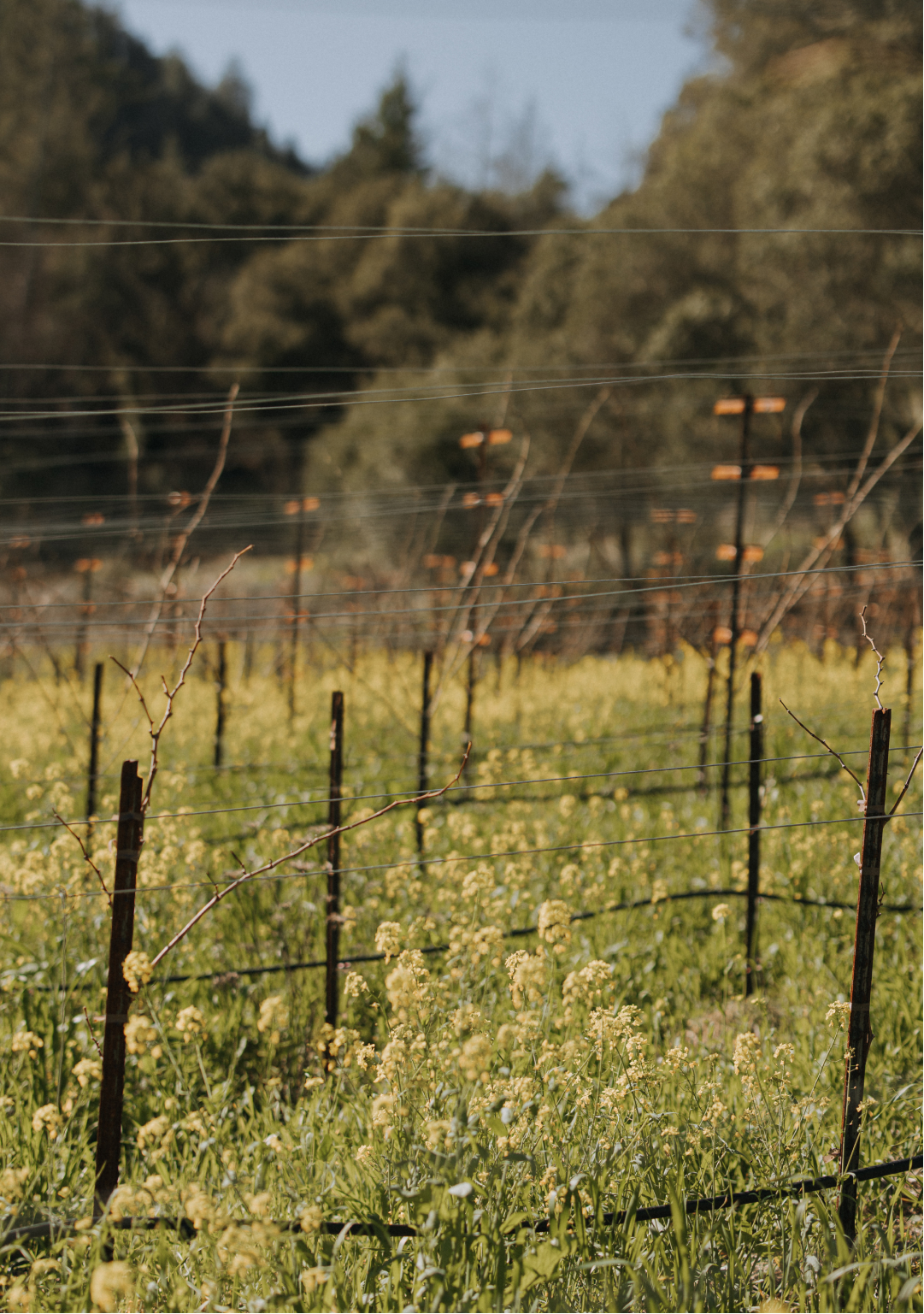
Our Climate
Ideal Conditions
Climatic influences such as northeast exposure and an elevation between 800 and 1550 feet make this mild microclimate an ideal location for growing grapes. The bright, mineral backbone of our wines is a credit to the volcanic mountain soils and, far beneath the surface, limestone rock.
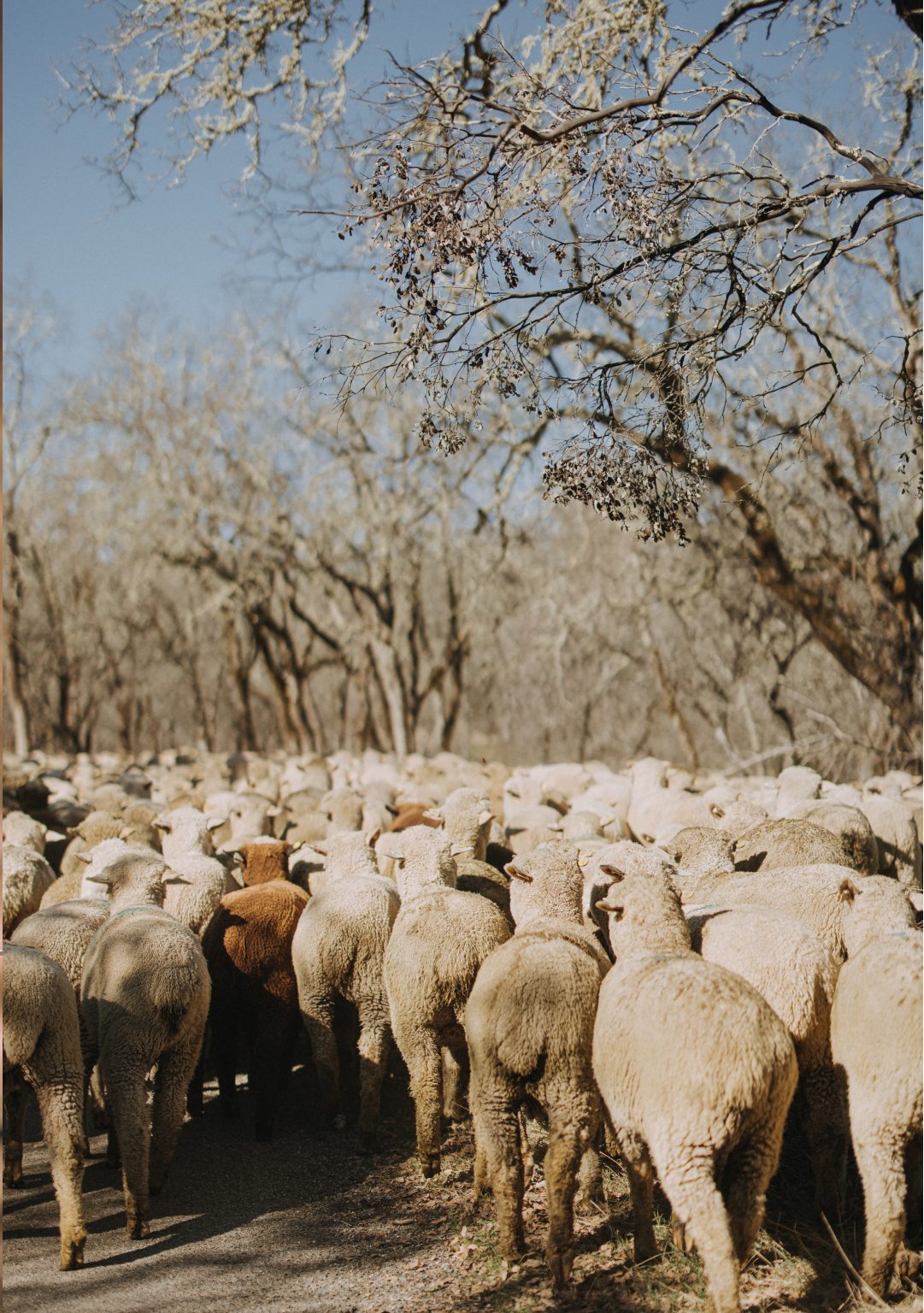
Farming Practices
The Focus of Preservation
Stony Hill Vineyard obtained its organic certification “CCOF” in 2019 and also utilizes regenerative farming practices.
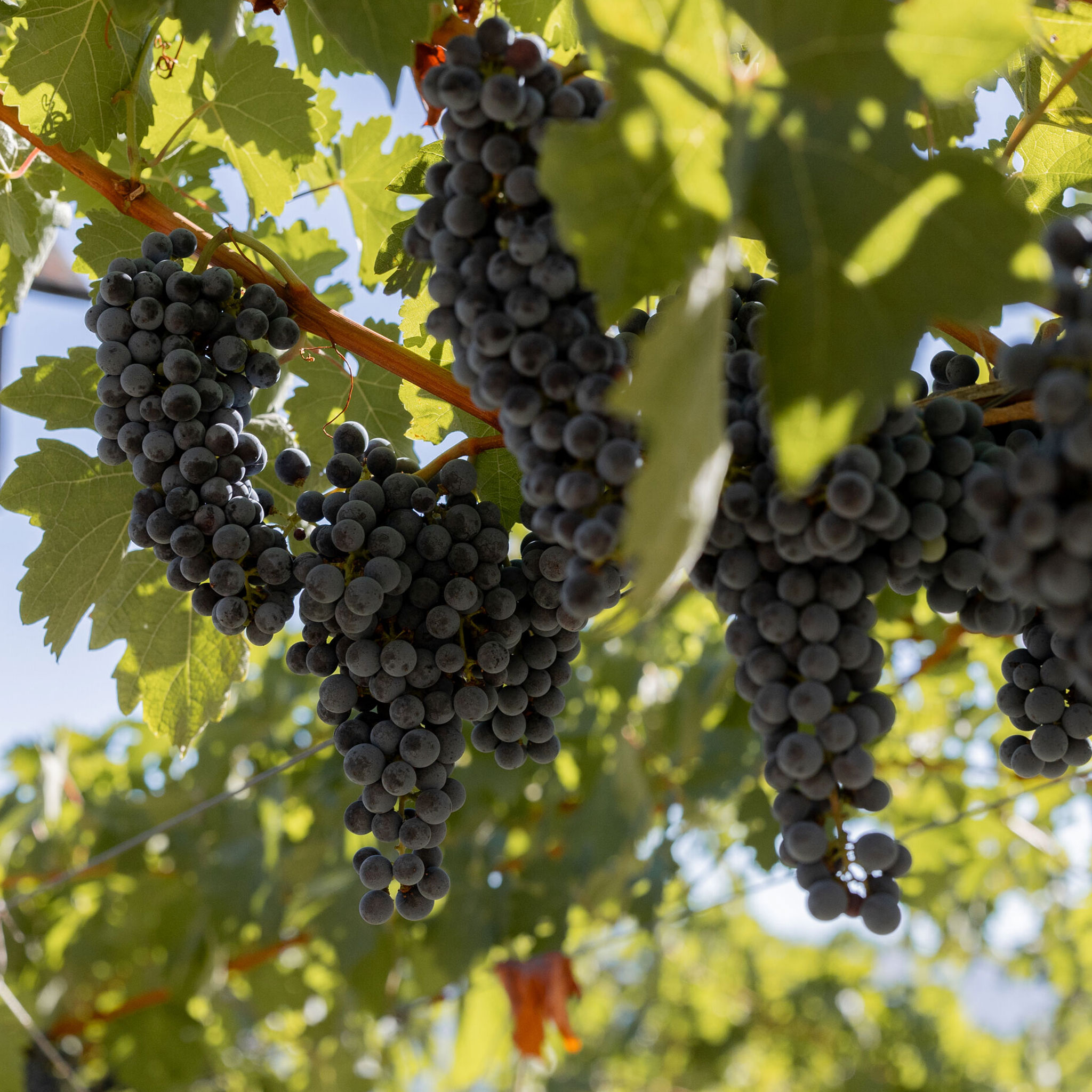
Our Grapes
Today and Tomorrow
Chardonnay, Riesling, and Gewürztraminer are the historic white grape varieties still planted at Stony Hill with their red counterparts Cabernet Sauvignon, Merlot, and Syrah added over the past twenty years.
While the Bordeaux varieties were originally only located at the highest elevation parcels, we believe our entire site is exceptional for them to thrive and have planted parcels at varying elevations and soil types. These are reflected in our upcoming Estate Cabernet series: Côtes des Pierres, Côte Boisée, and Côte Rouge. They are expressions of distinct ecological zones on the property delineated by soil type, elevation, and orientation.
